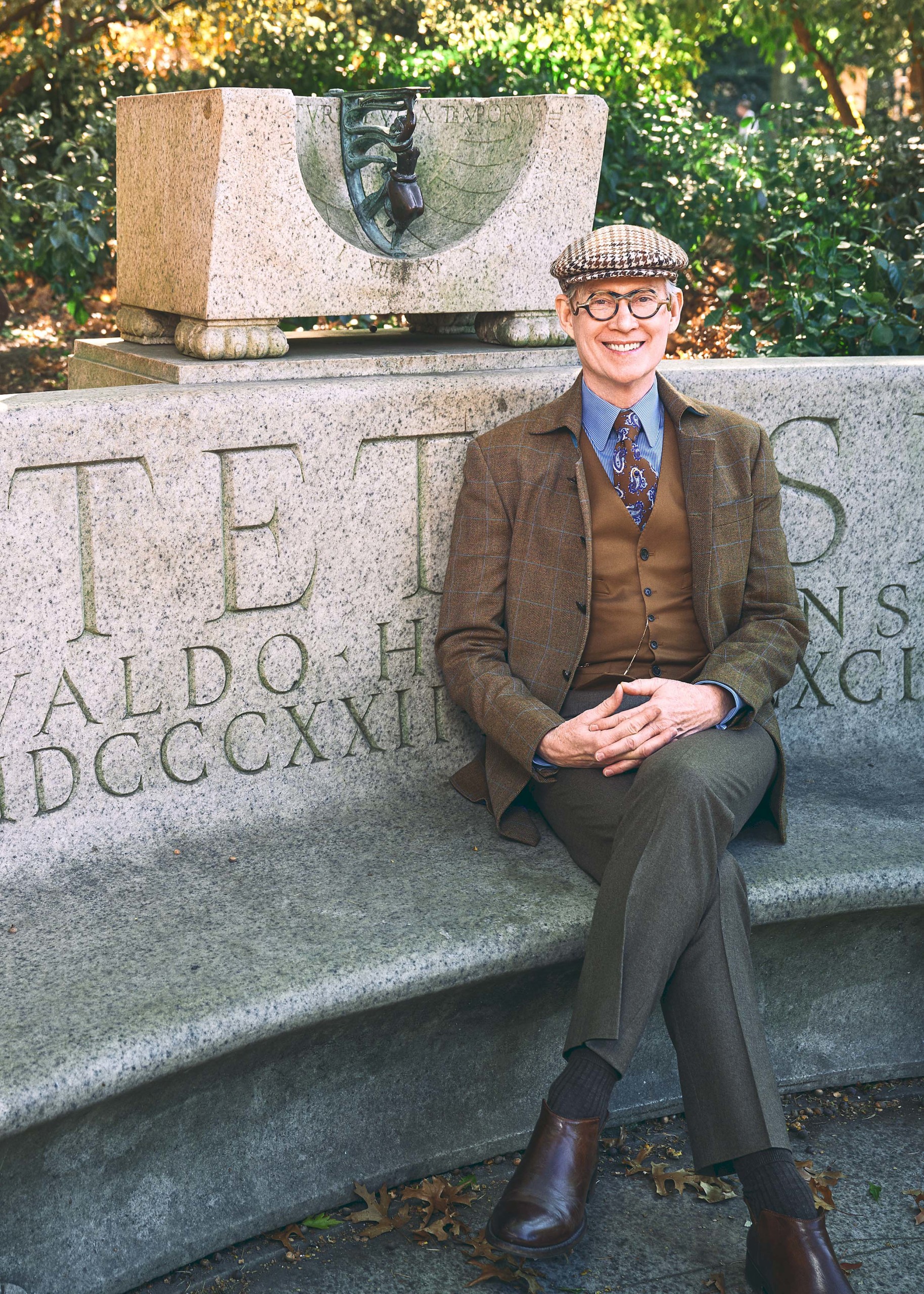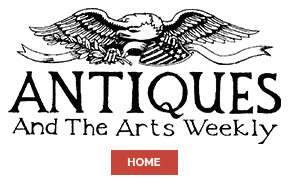
Matthew White photographed with the Waldo Hutchins bench and sundial in Central Park. Stephen Mack photo.
A new book, scheduled to be released in early October, explores the public clocks in New York City. When most readers rely on smart watches or phones to get them where they need to be, New York Minute – Public Clocks That Make The City Tick is a refreshing look back at how previous generations told time. Author Matthew White, who is also an interior designer, antiquarian and preservationist, shared some of the book’s backstory with us ahead of the book’s formal launch.
What was your inspiration for the project?
Almost 20 years ago, I wrote a piece for a quarterly design log read by the followers of our interior design firm White Webb (co-founded by Frank Webb). This article was titled “New York Minute” and, in it, I shared my love of the historic clocks of New York. I’m not a horologist (an expert in time and timekeeping devices) but do know my way around historic design and have long admired architectural clocks. After writing that short article, illustrated with photographs I took of a handful of my favorites, I thought to myself, “someone needs to turn this into a proper book and title it New York Minute.” Many years later, toward the end of the pandemic I woke up one morning and asked myself, “What the heck are you waiting for?” I started work right away, creating a list of my favorite clocks, researching, creating a framework for the book and planning photography excursions. This took me to every corner of the city and each step in the process has been exciting, even joyful.
Are there other books that explore this subject? If so, what sets New York Minute apart from the others?
There’s a book titled Clocks of New York: An Illustrated History by Chris DeSantis and Vinit Parmar. I was deep into creating my book before I knew this book existed and didn’t get a copy of Clocks of New York until I had already selected the majority of the clocks I wanted to feature. Clocks of New York approached the topic more from a horology perspective. That’s a somewhat different audience than New York Minute, which is written from a design and preservationist point of view. My book is an art/design/architecture book, with a solid dose of history, but it also reflects on the expansive inclusion of New York City for those of us who left places that were smaller and certainly slower. This book is my love letter to New York City and the great architects and artisans who built this place many of us call home.
How long did it take to pull together everything for the book?
It took a solid three years, all after the 15-plus years of the idea bouncing around in my head. One could say I was primed to make this book. Abbeville Press did a spectacular job of bringing New York Minute into tangible reality.
What was your source for the images?
I took all the new photography myself and created hand-drawn “clock portraits” of over 50 featured clocks. I selected these clocks for their historic and design interest. There were additional clocks I could have included, but this is not meant to be an exhaustive survey of extant clocks. Throughout the book are evocative historic images, primarily of clocks that no longer exist. We sourced many of these from The New York Historical and other historic archives. The book is 200 pages with over 150 images.

What were some of the biggest surprises you encountered in your research?
I knew going in that these clocks were far more than just a lot of pretty faces (though they are that!). Learning more about their stories was exciting and gave me a real sense of the eras in which they were created. These timepieces are important, not just as landmarks, or statements of style and exceptional design, but their creation helped shape New York’s urban landscape and how people used, and still use, the city. That’s a big part of the stories of these clocks — that they were created for the public. The clocks in the book date from 1789 to 2021, and for the majority of that time most working New Yorkers didn’t own personal timepieces. These clocks helped them navigate life in the city. They may have been funded by gilded names of business or society, designed by influential designers, and created by brilliant artisans, but those movers, shakers and makers created these clocks with the greater good in mind. They were, and are, a gift to the city.
Though this book isn’t yet out, what were some of the initial responses to those that had access to the project along the way?
The book has received wonderful blurbs from notable, highly creative New Yorkers, which is of course an honor. Wendy Goodman, design editor of New York magazine, wrote the foreword. When I’ve shown advance copies to mentors and book sellers, they all remark how beautifully designed the book is. I don’t believe anyone should ever make anything that isn’t truly beautiful, but even art books are meant to be read. New York Minute is loaded with only-in-New York stories that give a true sense of time and place. Almost everyone who has seen the book told me they were surprised by how many of these clocks still exist. In an age where many pedestrians rarely take their eyes off of their phones, I hope this book inspires everyone to take a deep breath, and look up. New York’s splendid public clocks are there for all of us.
—Madelia Hickman Ring
[Editor’s note: New York Minute – Public Clocks That Make The City Tick can be purchased from the publisher (www.abbeville.com/products/new-york-minute).]




